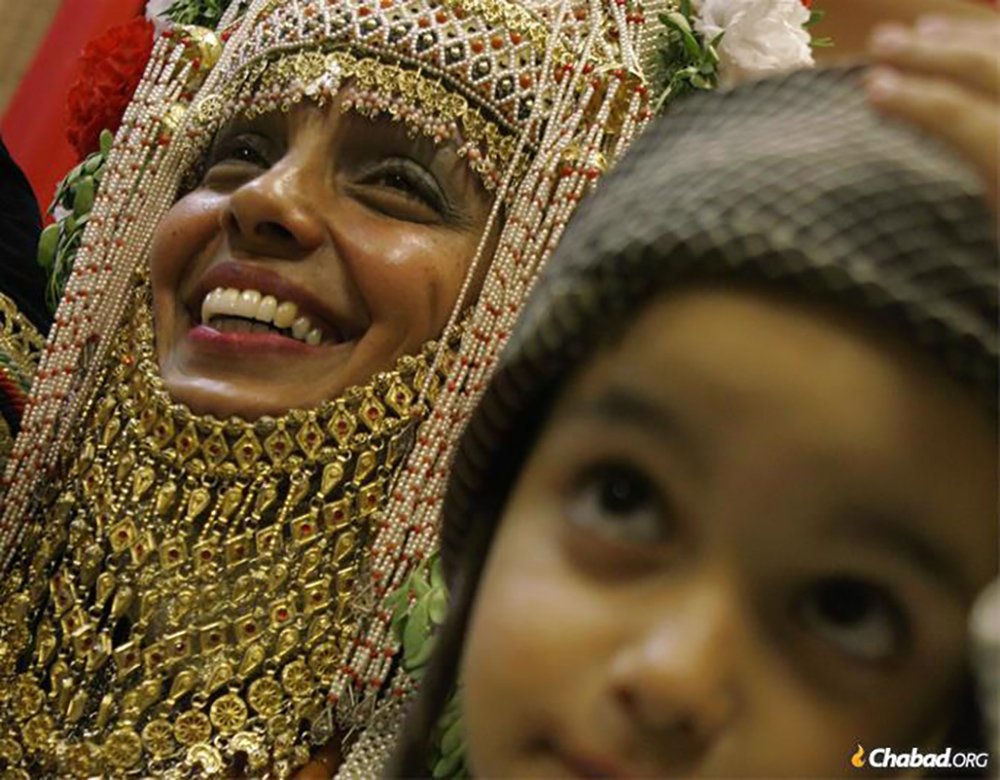By: Menachem Posner
- How Long Did That Wedding Last?
In most Jewish communities, as codified by Jewish law, the wedding celebration for first-timers lasts a week. Among Yemenite Jews, however, the wedding is a six-week affair, with each week’s Shabbat bringing its own unique customs, rituals, and guest list. Another custom one would have seen in Yemen (and other communities): Instead of giving the bride a ring to cement the matrimonial ties, the groom gives his intended a coin.
- Mikvah Party!
According to Jewish law, after counting seven days since the end of her period, a bride must immerse in a mikvah before being intimate with the groom. For many, the pre-wedding mikvah is a private affair—as it will remain throughout her marriage. In some Sephardic communities, however, the bride is accompanied by many female members of her family and the groom’s family, who are on hand to shower her with blessings and good wishes. The occasion often includes food, drink, music, and more.
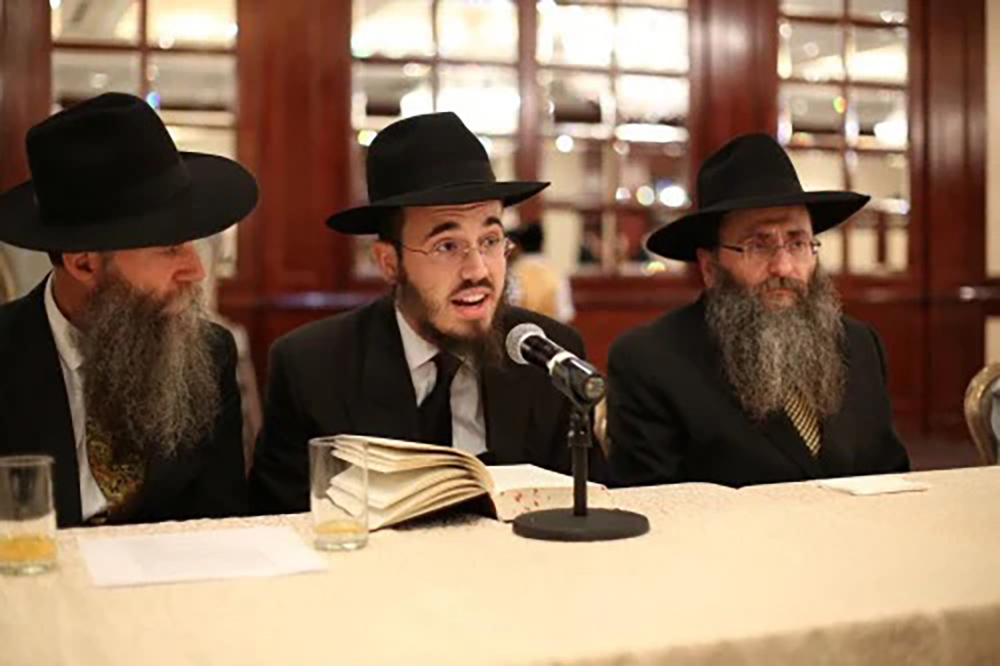
- Henna Dying
The details of who, what, and where vary, but many Jews from Arab lands observe henna, in which the bride and others (exactly who depends on local custom) dye their hands with henna ink, which leaves behind an orangy stain that can remain for several days or more. At times, this takes place at the post-mikvah party. The three Hebrew letters that spell out henna (חנה, cheena) are said to be an acronym for the three mitzvot especially treasured by (married) women: ח challah (ensuring that the home is kosher), נ niddah (observing Family Purity) and ה hadlakat nerot (lighting candles before Shabbat and Jewish holidays.
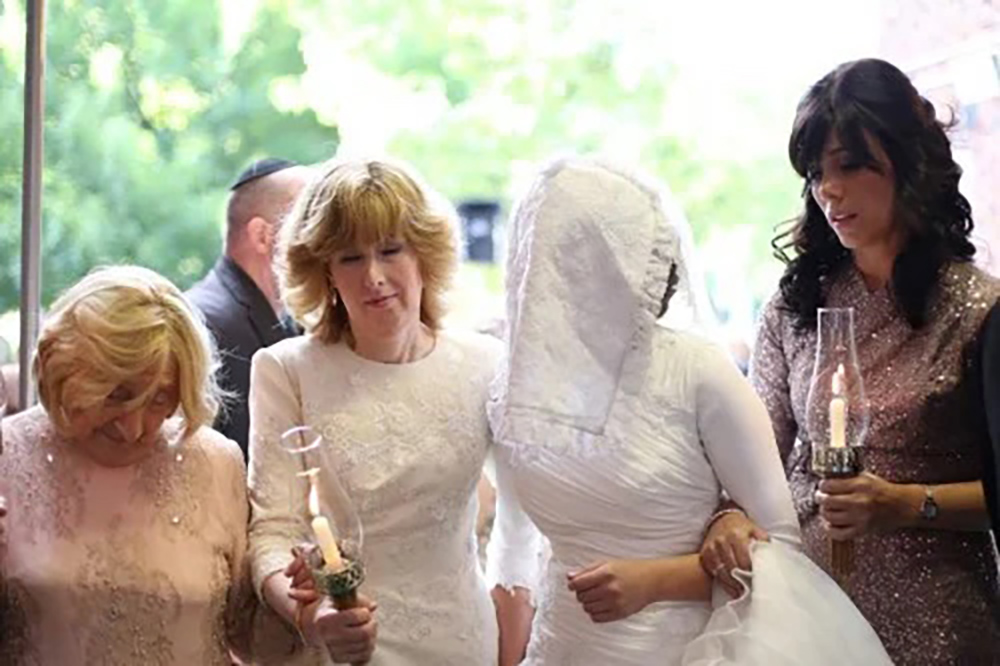
- Not Meeting for a Week
They say that absence makes the heart grow fonder. Among many Ashkenazim, there is a custom for the bride and groom not to see each other for a week before the wedding, until they meet at the badeken, when the groom covers the face of his wife-to-be with a veil.
- Fasting
An unrelated wedding custom that many observe is for the couple to fast on their wedding day, which is akin to their own private Yom Kippur. They then break their fast together in the privacy of the yichud (seclusion) room, where they spends time completely alone for the first time in their lives.
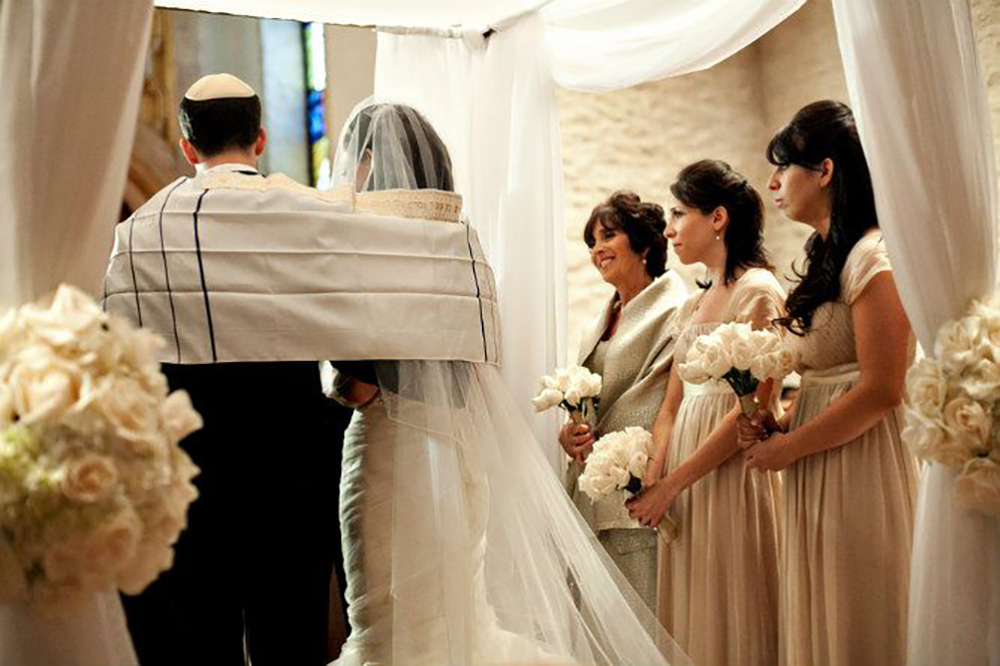
- Reciting a Chassidic Discourse
The wedding celebration typically begins with the bride and groom each presiding over their own kabbalat panim (reception). In Chabad custom, the groom uses this time to share a maamar (chassidic discourse) on the mystical elements of the union of male and female that take place at a wedding.
- Candle-Lit Procession
It is an ancient Jewish custom for the bride and groom to be escorted to the chuppah (wedding canopy) by their parents (and sometimes grandparents or other close friends and relatives). In many communities, the escorts (known by their Aramaic name, shushvinin) carry lit candles. Among Georgian Jews, at one point during the ceremony, candles are born aloft on loaves of bread.
- Under the Open Sky
In some communities, weddings are held in homes or in synagogue sanctuaries. Among Eastern-European Jews, however, it is customary to hold the chuppah under the open sky, symbolizing that the couple should receive the blessing that G‑d gave our forefather Abraham: “I will greatly multiply your seed as the stars of the heavens and as the sand that is on the seashore …” This is not customary, however, when the bride and groom have been previously married.
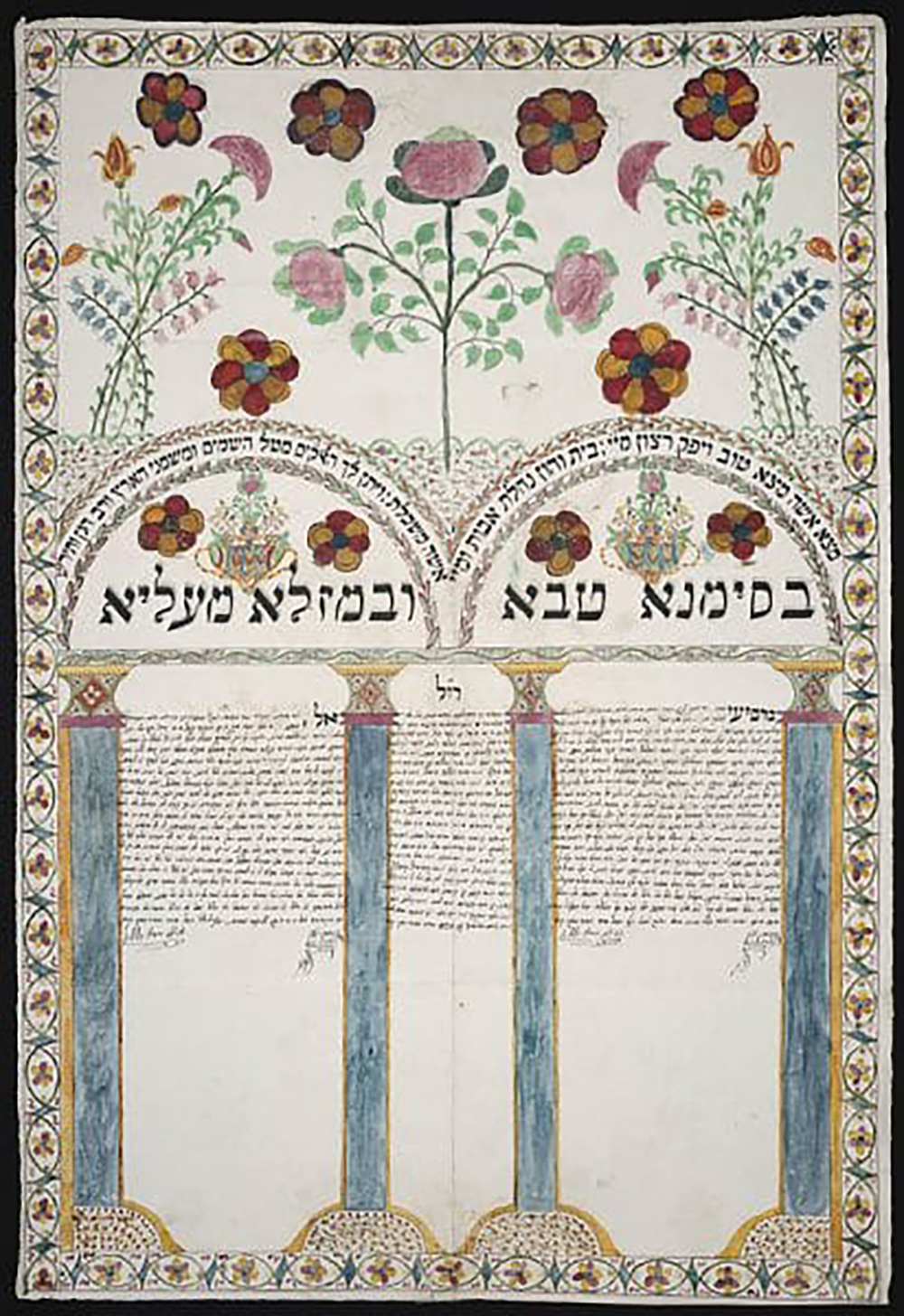
- Serving Two Stuffed Pigeons
In Jerusalem, some have the custom to serve the bride and groom stuffed pigeons (doves) for their first meal together, apparently expressing the wish that they build their home on a foundation of love, just like the dove used in Song of Songs as the paradigm of love and fidelity.
- Just Drumming
Among Jerusalem’s old-timey Ashkenazi residents, it’s customary for the wedding band to consist of just a vocalist and a drummer (referred to in Yiddish as a poiker). This practice can be traced to the mid 19th-century and is in the spirit of the Talmudic teaching that following the destruction of the Holy Temple in Jerusalem, it is not appropriate to enjoy music.
- Mitzvah Tantz
In some chassidic communities, there is an interesting custom known as a mitzvah tantz, whereby various family members or other respected individuals are called up to dance “with” the bride: they dance grasping the end of a cord that the bride is holding at the other end. The groom (and possibly the father of the bride) is the only one who dances with the bride herself. (It should be noted that this custom is not practiced in Chabad, and the Rebbe expressed his view that it is not consistent with halachah.) –
Rabbi Menachem Posner serves as staff editor at Chabad.org, the world’s largest Jewish informational website. He has been writing, researching, and editing for Chabad.org since 2006, when he received his rabbinic degree from Central Yeshiva Tomchei Temimim Lubavitch. He resides in Chicago, Ill., with his family.



